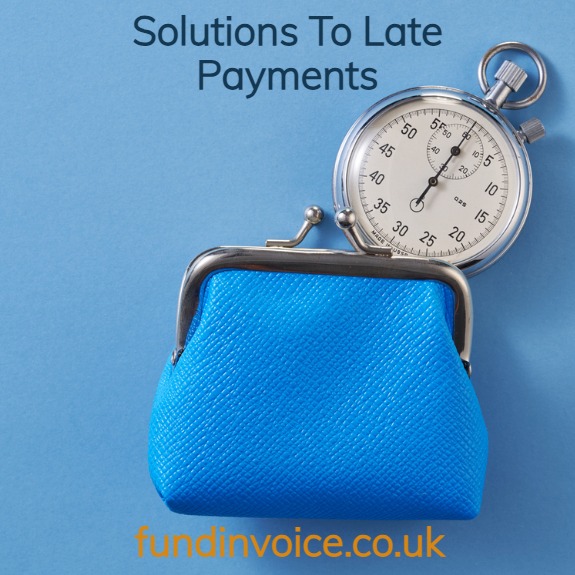- 14 Dec
Costs Of Collecting Late Payments Rising According To New Research
 New research from Bacs Payment Schemes Ltd (Bacs) shows that the cost of collecting late payments, due to SMEs, has more than doubled to £6.7 billion (£2.6 billion in 2017).
New research from Bacs Payment Schemes Ltd (Bacs) shows that the cost of collecting late payments, due to SMEs, has more than doubled to £6.7 billion (£2.6 billion in 2017).A huge 78% of SMEs are now forced to waiting 1 month or more, beyond their standard terms, to get paid by their customers. That is a huge amount of cash tied up in unpaid receivables.
40% of SMEs affected by late payments say that large businesses are the worst offenders. Whilst big companies may be of good standing, and expected to pay eventually, often slow payment processes, red tape or policies to maximise cash flow are the cause of longer payment terms. Also, as we have seen with cases such as Carillion, even large companies can fail.
Solutions To Late Payments
These are some potential solutions to help deal with the issues created by late customer payments.
Good Credit Control
Having good credit control procedures in place is essential to maximise the possibility of getting paid on time. Also, proper credit assessment of new prospective customers can help you avoid dealing with companies that have a history of paying slow.
See our free credit control guide for ideas about how to structure you own credit control system.
Outsourcing Your Credit Management
If you don't have the skills in-house to manage customer credit, you could look at outsourcing the function to a professional provider. We have successfully found external credit control services for clients which can help improve debt turn (the speed with which customers pay).
If you are already using a service that is costing too much, we may be able to help reduce that cost by introducing you to cheaper providers.
Funding To Bridge The Credit Gap
If you are suffering cash flow problems, due to late payments from customers, receivables funding is a possible solution. It works by immediately releasing a large proportion of the value of debts that are owed to your company, with the balance paid (less a fee) when you are eventually paid by your customer. This bridges the credit gap between invoicing and getting paid.
You can put that cash to any use within your business. If you have a sales ledger of say £100,000 of unpaid invoices, you could release up to £85,000 immediately (with the balance paid as described previously).
That funding can be provided on a standalone basis (called invoice finance or invoice discounting), or in conjunction with a credit control service (called factoring). There are also options that will provide just temporary cash flow support (selective) or bad debt protection in case your customer becomes insolvent and doesn't pay at all. We describe the various options and how the facilities work in our free guide to invoice finance.
- Home
- Business Financing
- Invoice Finance
- Invoice Discounting
- Factoring
- Debt Factoring
- Recourse Factoring
- Fund Selected Invoices
- Business Loans
- Construction Sector Funding
- Protect Against Bad Debts
- Exports Collection And Funding
- Import Funding
- Body Shop Funding
- Spot Factoring
- Retail Sector Funding
- Fund Invoices Confidentially
- Help Running Your Payroll
- CHOCs Customer Handles Own Collections
- Collect Invoices Confidentially And Funding
- Outsourcing Your Credit Control
- Asset Finance And Mortgages
- Case Studies
- About Us
- Testimonials
- Find Out More
- News
- Free Magazine
- Blog






